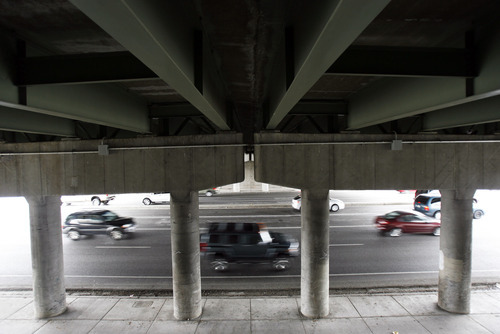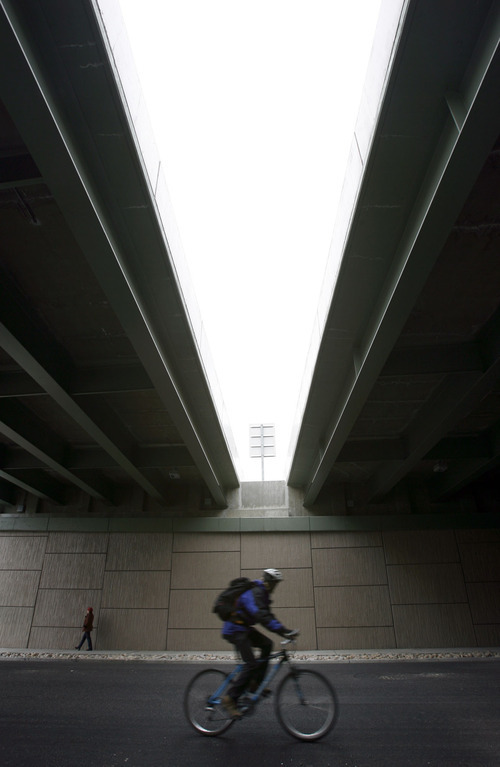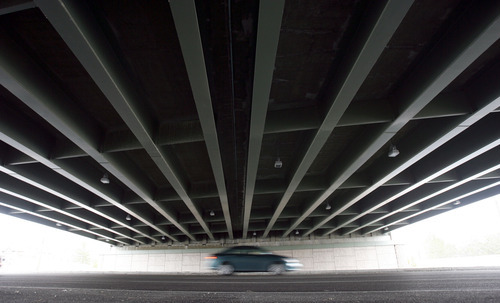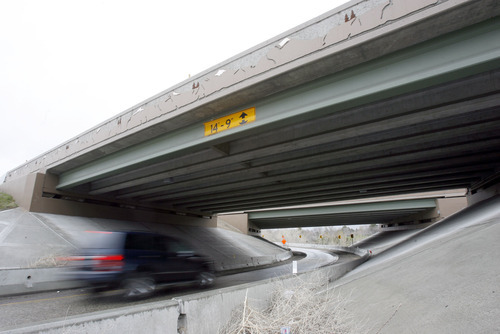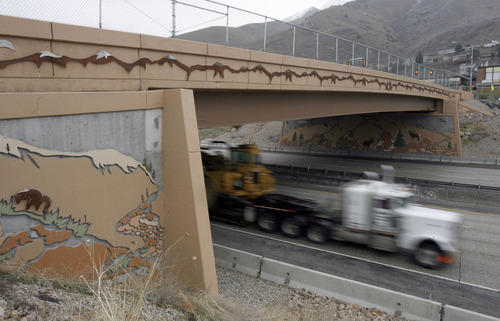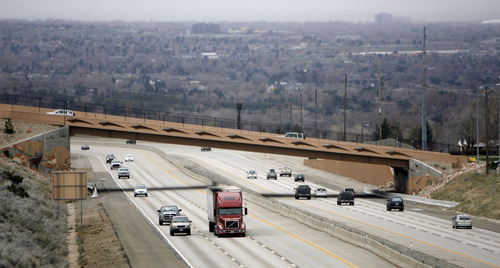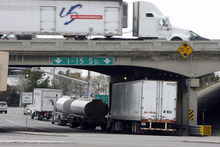This is an archived article that was published on sltrib.com in 2011, and information in the article may be outdated. It is provided only for personal research purposes and may not be reprinted.
Utah's highway bridges now rank among the safest in the nation, but still have room for improvement, says a new national report.
About 4.5 percent of local and state bridges in Utah are rated by inspectors as "structurally deficient," meaning key support structures or their decks are in poor, deteriorating condition, according to a report Wednesday from Transportation for America, a transportation-reform group.
While that means one of every 20 bridges in Utah has significant problems, that percentage is the fifth best among the states. It is less than half the national average of 11.5 percent of all bridges being classified as deficient, the report said.
It also shows Utah has made much progress in the past two decades. In 1988 13.5 percent of the Beehive State's bridges were rated as structurally deficient. Utah has reduced that amount by two-thirds since then.
Carlos Braceras, deputy director of the Utah Department of Transportation, said 1.6 percent of state-owned bridges are structurally deficient (6.9 percent of local bridges are).
He noted some large reconstruction and expansion projects removed many older, problematic bridges that the state owned. That includes rebuilding and expanding Interstate 15 in Salt Lake County before the 2002 Winter Olympics; reconstruction completed last year of Interstate 80 in east Salt Lake County; and the current reconstruction of I-15 in Utah County.
"Some of the bridges we replaced on I-80, for example, were among those that we had to keep an especially close eye on," Braceras said. "They had poor decks, and we had to put carbon-fiber wrap around some columns to ensure safety."
He said UDOT has four goals that have helped to replace poor bridges and maintain good ones over time.
They are:
• Maintain what UDOT has;
• Improve highway efficiency by eliminating bottlenecks;
• Improve safety;
• And increase capacity.
The new report also included a list of the two busiest structurally deficient bridges in each state. It turns out that Utah just replaced one of them last year — the I-15 bridge over Beck Street in northern Salt Lake County.
"It was one that we watched closely," Braceras said.
The other is an I-15 bridge for northbound lanes over 2600 South in North Salt Lake, over which 76,000 vehicles pass on a typical day.
"It has a deck that needs to be replaced," Braceras said. "It is proposed to be redone in fiscal 2014 or 2015."
While the report shows progress made by Utah, Braceras said, "We still have a lot of work ahead of us."
For example, he said, 414 state bridges were built in the 1960s and an additional 372 were built in the 1970s — and they generally have 45- to 50-year life spans.
"We won't take our eye off the ball" on keeping those bridges safe, and replaced when needed, he said;
He added that the state would close any bridge it determines is unsafe for travelers.
The report said 130 locally and state-owned bridges in Utah out of 2,910 are now "structurally deficient," or 4.5 percent.
On the other end of the spectrum, Pennsylvania had the largest share of deteriorating bridges at 26.5 percent, followed by Oklahoma (22 percent), Iowa (21.7 percent), Rhode Island (21.6 percent) and South Dakota (20.3 percent).
Utah has fifth safest bridges
Percent of "structurally deficient" bridges in states:
1. Nevada, 2.2 percent.
2. Florida, 2.4 percent.
3 (tie). Texas and Arizona, 3 percent.
5. Utah, 4.5 percent.


